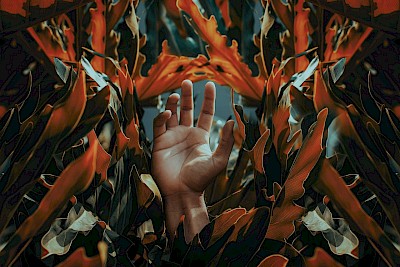"I can't," I said, "I CAN'T!"
-Insurance? Asked the fat man.
"Yes, I would like nothing more than to be able to sit in front of her and tell her how I feel ... but I know I can't."
The fat man sat Buddha-style in those horrible blue office chairs, he smiled, looked me in the eye and lowering his voice (which he did every time he wanted to be listened carefully), he said:
"Can you tell me something?"
And my silence was enough response.
Jorge began to count:
When I was a boy I loved circuses, and what I liked most about circuses were animals. Also to me as to others, after I found out, the elephant caught my attention.
During the performance, the huge beast displayed enormous weight, size and strength ... but after his performance and even for a while before returning to the stage, the elephant was only held by a chain that imprisoned one of its legs to a small stake nailed to the ground.
However, the stake was only a tiny piece of wood just a few inches buried in the ground. And although the chain was thick and powerful, it seemed obvious to me that this animal capable of uprooting a rennet tree with its own strength could easily pluck the stake and flee.
The mystery is evident:
What maintains it then?
Why don't you run away?
When I was five or six years old, I still trusted the wisdom of the greats. So I asked a teacher, a parent, or an aunt about the mystery of the elephant. Some of them explained to me that the elephant did not escape because it was trained.
So I asked the obvious question: "If he's trained, why are they chaining him?"
I do not recall receiving any consistent response.
Over time I forgot about the mystery of the elephant and the stake ... and only remembered it when I met others who had also asked themselves the same question.
A few years ago I discovered that luckily for me someone had been wise enough to find the answer:
The circus elephant does not escape because it has been tied to a similar stake since it was very, very small.
I closed my eyes and imagined the little newborn tied to the stake.
I am sure that at that moment the little elephant pushed, pulled and sweat trying to get free. And despite all his efforts, he could not.
The stake was certainly very strong for him.
He would swear that he fell asleep exhausted and that the next day he tried again, and also the other and the one who followed him ...
Until one day, a terrible day for its history, the animal accepted its impotence and resigned itself to its destiny.
This huge and powerful elephant, that we see in the circus, does not escape because he believes - poor - that he CANNOT.
He has a record and a memory of his helplessness, of that helplessness that he felt shortly after birth.
And the worst thing is that this record has never been seriously questioned again.
He never ... ever ... tried to test his strength again ...
"And so it is, Demián." We are all a bit like that circus elephant: we go around the world tied to hundreds of stakes that take away our freedom.
We live believing that a lot of things "we can't" simply because once, when we were little, once, we tried and we couldn't.
So we did the elephant thing: we recorded in our memories:
I CAN'T ... I CAN'T AND NEVER WILL I
We have grown up carrying that message that we imposed on ourselves and we never tried again.
At most, from time to time we feel the shackles, we rattle the chains or look askance at the stake and confirm the stigma:
I CAN'T AND NEVER WILL I!
Jorge made a long pause; then he walked over, sat down on the floor in front of me and continued:
This is what happens to you, Demián, you live conditioned by the memory that another Demián, who is no longer, could not.
Your only way to know is to try again, putting all your heart into the attempt ...
… ALL YOUR HEART.
